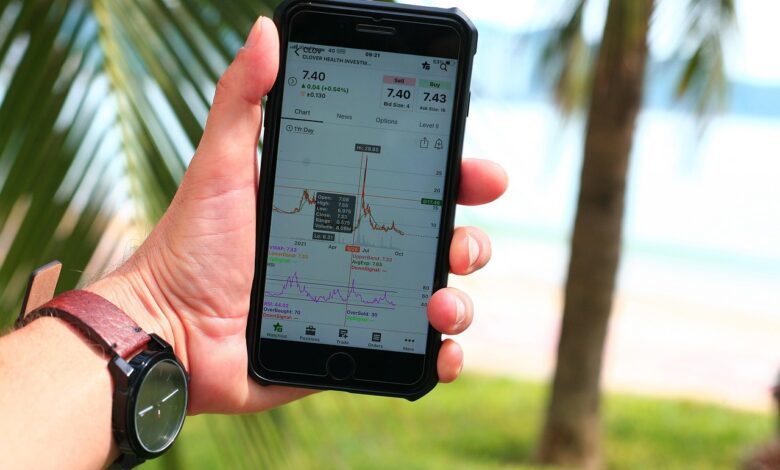Healthcare investing – demographic-driven strategies

Targeting sectors aligned with the aging population offers sustained expansion potential. By 2030, individuals over 65 will comprise nearly 20% of the global population, driving increased demand for chronic disease management and age-related therapies. Allocating assets to firms innovating in geriatric care and advanced diagnostics can capture this structural growth.
Investments centered on population dynamics should prioritize companies advancing medical technology and personalized treatment solutions. Innovations such as remote patient monitoring and AI-powered diagnostics enable more efficient care delivery, meeting the needs of a growing elderly demographic while enhancing operational margins.
Capital deployment strategies must consider regulatory trends supporting preventative care and value-based reimbursement models. These shifts favor enterprises developing integrated health platforms that reduce long-term costs, positioning them well for accelerated revenue trajectories tied to demographic shifts.
Healthcare Investing: Demographic-Driven Approaches
Allocating capital towards sectors influenced by population aging presents quantifiable opportunities, particularly in areas addressing chronic diseases and long-term care. Data from the United Nations indicates that by 2050, the global population aged 65 and over will reach nearly 1.5 billion, driving sustained demand for medical services and innovative therapeutic solutions. This demographic shift mandates portfolio allocations to companies advancing technologies such as telemedicine platforms, precision medicine, and wearable diagnostics that cater specifically to older adults.
Focusing on enterprises developing age-related medical devices has demonstrated consistent revenue growth exceeding 7% annually over the past five years, per industry reports. For instance, firms specializing in orthopedic implants and mobility aids have expanded their market share parallel to rising geriatric populations in North America and Europe. Investment models incorporating these trends outperform benchmarks tied to broader healthcare indices lacking demographic specificity.
Technological Innovation Aligned with Population Trends
Emerging innovations in biotechnology are increasingly tailored to address neurodegenerative disorders prevalent among aging individuals. Companies leveraging AI-driven drug discovery platforms report accelerated clinical trial success rates, reducing time-to-market by approximately 20%. Such advancements not only enhance patient outcomes but also improve capital efficiency for stakeholders focused on long-term asset appreciation within the medical sector.
The integration of blockchain technology into patient data management exemplifies a transformative approach enhancing transparency and security while facilitating regulatory compliance. Decentralized health records systems can streamline cross-border healthcare delivery for elderly populations managing multiple comorbidities, thereby creating new value chains attractive for strategic capital placement.
- Case Study: A leading biotech firm utilizing machine learning algorithms identified novel biomarkers for Alzheimer’s disease progression, resulting in a 30% increase in clinical trial enrollment speed.
- Market Insight: Telehealth providers focused on chronic disease management saw user base growth rates surpassing 40% year-over-year during demographic shifts intensified by aging trends.
Diversifying equity exposure across these segments mitigates risk associated with regulatory changes while capturing upside potential linked to demographic evolution. Geographic focus is equally critical; regions with faster population aging trajectories like Japan and Western Europe warrant closer attention compared to younger markets where different healthcare demands prevail.
The interplay between population dynamics and technological progress requires continuous reassessment of capital deployment frameworks. Investors prioritizing adaptive methodologies aligned with measurable demographic indicators position themselves favorably amid shifting demand patterns and innovation cycles within the medical domain.
Targeting Aging Population Sectors
Allocating capital toward sectors that address the increasing needs of older adults presents a clear pathway to sustained expansion. With the global population aged 65 and over projected to double by 2050 according to United Nations data, resource deployment in age-centric solutions underpins robust market potential. Innovations such as remote patient monitoring devices and AI-powered diagnostics exemplify areas where technology amplifies service delivery efficiency, directly responding to an expanding elderly demographic.
Financial commitment in domains catering to chronic disease management and mobility assistance aligns with observable epidemiological trends. The rise in age-associated conditions including cardiovascular diseases and neurodegenerative disorders creates quantifiable demand spikes for therapeutic advancements. For instance, companies leveraging blockchain for secure medical data sharing demonstrate how integrating decentralized ledger technologies enhances trust and operational transparency in treatment protocols tailored for seniors.
Technological Advancements Driving Market Growth
Significant growth trajectories are evident within sectors focusing on smart home integrations designed for elder safety and convenience. Systems embedding IoT sensors enable continuous health status tracking, reducing hospitalization rates while optimizing care costs. According to a recent report by Deloitte, the IoT healthcare market is expected to grow at a CAGR exceeding 20% over the next decade, propelled largely by aging population requirements.
Additionally, pharmaceutical firms innovating through gene therapy and personalized medicine find accelerated adoption among older cohorts due to their complex health profiles. Clinical trials increasingly incorporate stratification based on age-related biomarkers, improving outcome predictability. Investors prioritizing these niche segments benefit from regulatory frameworks incentivizing novel drug approvals specific to geriatric populations.
- Expansion of telehealth platforms targeting mobility-limited elderly individuals
- Development of AI algorithms predicting fall risks using gait analysis
- Deployment of wearable biosensors facilitating early detection of metabolic imbalances
The convergence of advanced analytics with demographic shifts fosters opportunities in long-term care infrastructure financing. Real estate investment trusts (REITs) specializing in senior living facilities register higher occupancy rates correlating with aging trends documented by the U.S. Census Bureau. Such tangible asset classes complement equity exposure in biotechnologies focused on longevity enhancement.
Cognizance of macroeconomic variables such as inflationary pressures and interest rate adjustments remains critical when evaluating long-term commitments in these sectors. While demographic momentum provides foundational growth impetus, sensitivity analyses indicate varying performance under differing economic scenarios. Integrating blockchain-enabled financial instruments offers enhanced liquidity solutions mitigating traditional sector-specific risks tied to aging populations.
Capitalizing on Chronic Disease Trends
Allocating resources toward sectors addressing chronic illnesses is a prudent approach in light of the aging demographic and the sustained rise in population longevity. The prevalence of conditions such as diabetes, cardiovascular diseases, and neurodegenerative disorders continues to escalate globally, driven by both increased life expectancy and lifestyle factors. Data from the World Health Organization indicates that non-communicable diseases account for over 70% of global deaths annually, underscoring the urgent demand for advanced therapeutic solutions and efficient management systems.
The expansion in patient populations necessitates adaptive methodologies that integrate medical innovation with scalable delivery models. Emerging technologies like blockchain-enabled health data interoperability platforms and AI-driven predictive analytics are transforming patient care pathways by enhancing precision medicine and reducing administrative overhead. Stakeholders focusing on these technological adaptations stand to benefit from improved treatment outcomes aligned with shifting demographic profiles.
Targeted Approaches Leveraging Population Dynamics
The correlation between demographic shifts–particularly an increasing elderly cohort–and chronic disease incidence informs investment direction toward specialized pharmaceutical developments and personalized medicine. For example, gene editing tools such as CRISPR have entered clinical trials targeting hereditary forms of chronic kidney disease, exemplifying how tailored interventions respond to specific patient subsets within expanding age brackets. Such focus enhances cost-efficiency and efficacy compared to generalized treatments.
Beyond therapeutics, infrastructure enhancements incorporating telemedicine and remote monitoring devices demonstrate significant potential to reduce hospital admissions and optimize resource allocation across healthcare networks. Case studies reveal that integrated digital platforms supporting continuous glucose monitoring in diabetic patients reduce emergency visits by approximately 30%, validating technology-driven operational improvements synchronized with demographic realities.
Investing in Eldercare Technologies
Allocating capital toward eldercare technologies presents a compelling opportunity aligned with the ongoing demographic shift characterized by an increasing aging population. The expansion of this segment necessitates innovative solutions that address chronic disease management, mobility assistance, and remote monitoring. Market data from Frost & Sullivan indicates that the global eldercare technology sector is poised to grow at a compound annual growth rate (CAGR) exceeding 15% through 2030, driven primarily by rising demand for personalized care and automation.
The aging demographic imposes significant pressure on existing medical services, prompting a pivot towards scalable technological applications such as AI-powered fall detection systems, wearable biosensors, and telehealth platforms tailored for seniors. These tools not only enhance quality of life but also reduce institutional caregiving costs, creating value propositions attractive to long-term capital allocation focused on sustainable expansion within this niche.
Technological Innovations and Market Dynamics
Emerging devices integrating blockchain for secure health data management demonstrate a promising avenue for maintaining patient confidentiality while enabling seamless interoperability between caregivers and healthcare providers. For instance, projects like CareChain utilize decentralized ledgers to track medication adherence in real-time among elderly patients with complex regimens. This approach mitigates risks associated with polypharmacy and noncompliance, factors known to exacerbate hospital readmission rates.
Another notable trend involves robotic companions equipped with machine learning algorithms designed to detect emotional states and cognitive decline. Companies such as Intuition Robotics have reported pilot studies where their ElliQ device improved engagement metrics by over 30%, suggesting potential reductions in mental health burdens frequently observed in isolated senior populations. Such innovations underscore how artificial intelligence can be harnessed to create scalable eldercare solutions that align with shifting demographic requirements.
The integration of smart home technologies also plays a pivotal role in this sector’s trajectory. Sensors embedded within living environments enable continuous monitoring of vital signs and environmental hazards without infringing on personal privacy. Market research from Grand View Research highlights that smart home eldercare solutions reached a valuation surpassing $4 billion in 2023, projecting further acceleration as governments increase funding for aging-in-place initiatives worldwide.
Strategic portfolio diversification into companies specializing in remote diagnostics, adaptive assistive devices, and digital therapeutics offers exposure to multiple facets of eldercare innovation. Investors should consider regulatory frameworks governing medical device approvals and data protection standards across jurisdictions since compliance significantly impacts time-to-market and scalability potential. Assessing firms’ R&D pipelines alongside collaboration agreements with public healthcare entities provides additional insight into growth trajectories amid evolving economic conditions.
Analyzing Regional Demographic Shifts
Regions experiencing rapid population growth present distinct opportunities for capital allocation in sectors addressing expanding demand. For instance, Sub-Saharan Africa’s youthful demographic underpins rising needs for pediatric care and preventive services, encouraging deployment of resources into scalable medical technologies and infrastructure upgrades. Conversely, areas like Japan and parts of Western Europe face pronounced aging trends, driving increased expenditure on chronic disease management and long-term care solutions.
Investment decisions must incorporate granular demographic data to align with evolving regional health demands. The United Nations projects that by 2050, individuals aged 65 and older will constitute nearly 30% of the population in developed countries, intensifying pressure on service delivery models. This shift necessitates innovations such as AI-driven diagnostics and decentralized treatment platforms tailored to elderly patients’ complex needs, highlighting avenues where capital can generate both social impact and financial return.
Regional Case Studies Highlighting Demographic Impacts
The United States demonstrates a heterogeneous demographic profile where growth concentrates in Sun Belt states due to inbound migration and higher birth rates, boosting demand for maternal health and pediatric solutions. Meanwhile, Midwestern states show stagnation or decline in younger cohorts but an increase in elderly populations, prompting focus on geriatric care advancements. Corporations leveraging blockchain-enabled patient data interoperability have achieved efficiency gains here by facilitating secure information exchange across fragmented providers.
China’s demographic trajectory reveals a slowdown in population expansion alongside accelerated aging caused by decades of the one-child policy. Pharmaceutical companies targeting age-related diseases have intensified R&D efforts supported by government incentives promoting innovation ecosystems. Furthermore, healthcare platforms integrating telemedicine with AI risk stratification tools are gaining traction to address rural-urban disparities exacerbated by uneven population distribution.
The integration of technological advancements with demographic realities underpins sustainable resource allocation frameworks. Capital flows targeting emerging markets should consider the dual forces of expanding youth populations demanding foundational services alongside gradual aging requiring chronic condition management. Similarly, mature economies benefit from precision medicine initiatives that leverage genomics coupled with real-world evidence sourced through distributed ledger technologies enhancing transparency.
An analytical approach incorporating census projections, morbidity statistics, and technology adoption rates facilitates identification of high-potential sectors aligned with shifting population dynamics. This multidimensional evaluation supports prudent portfolio construction emphasizing exposure to companies innovating within digitally enabled care delivery and age-specific therapeutic modalities. Ultimately, anticipating regional transitions in population structure empowers stakeholders to optimize asset deployment amid evolving societal needs.
Portfolio Diversification with Biotech Firms: Analytical Conclusion
Allocating capital toward biotech entities specializing in age-related therapeutics and precision medicine offers a compelling avenue for portfolio expansion amid shifting demographic trends. The persistent rise in the elderly population segments correlates directly with escalating demand for innovative treatments addressing chronic and degenerative diseases, presenting quantifiable growth potential supported by clinical pipeline advancements and regulatory endorsements.
Integrating firms leveraging genomic editing platforms, AI-driven drug discovery, and personalized healthcare solutions provides robust exposure to sectors benefiting from longevity-related market drivers. These companies demonstrate resilience against macroeconomic fluctuations due to their alignment with fundamental population health dynamics, underscoring strategic merit in asset allocation frameworks targeting sustainable returns.
Key Technical Insights and Forward-Looking Implications
- Population Aging as Growth Catalyst: The global increase in median age intensifies demand for biologics, cell therapies, and neurodegenerative disease interventions–areas where biotech innovation is accelerating through advanced molecular techniques.
- Regulatory Tailwinds: Expedited approval pathways such as Breakthrough Therapy Designations are reducing time-to-market for high-impact therapies, enhancing revenue visibility and investment appeal within this segment.
- Diversification Through Therapeutic Specialization: Exposure across multiple modalities–ranging from immunotherapies to RNA-based treatments–mitigates risk concentration while capitalizing on heterogeneous technology adoption curves.
- Technological Synergies: Convergence of blockchain-enabled data integrity systems and decentralized clinical trials enhances transparency and accelerates development cycles, representing an underappreciated vector of competitive advantage.
The evolving demographic profile predicates sustained demand escalation in specialized medical care sectors, validating increased weighting towards biotechnology enterprises in diversified holdings. Anticipated advancements in regenerative medicine coupled with real-world evidence integration will likely redefine conventional valuation metrics, necessitating continuous reassessment of portfolio composition relative to emergent scientific breakthroughs and policy shifts.
Strategically positioning assets within firms at the nexus of aging population needs and technological innovation not only aligns capital deployment with enduring macro trends but also leverages transformative opportunities poised to reshape therapeutic paradigms over the coming decade.






